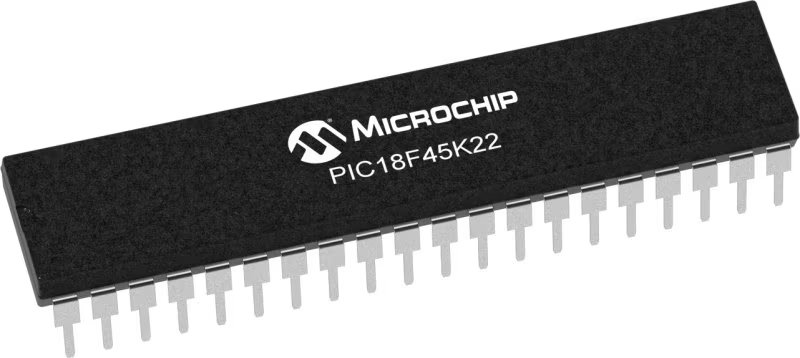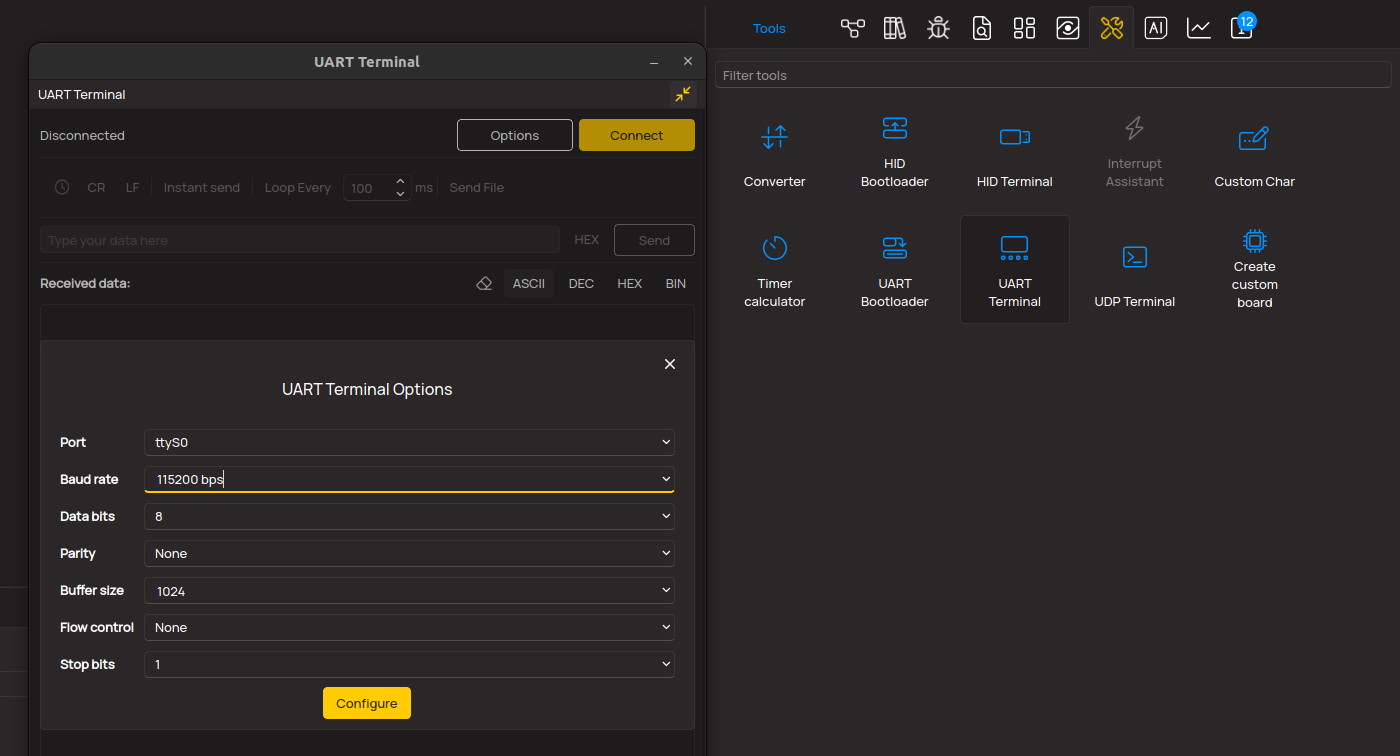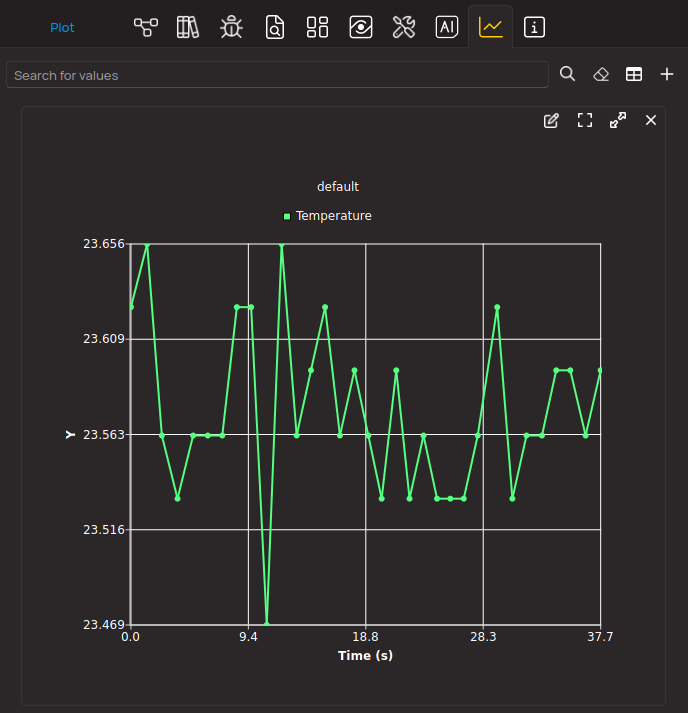Super-efficient audio power amplifier based on proprietary multi-level switching technology
A
A
Hardware Overview
How does it work?
AudioAmp 8 Click is based on the MA12070, a super-efficient audio power amplifier based on proprietary multi-level switching technology that enables low power loss during operation from Infineon Technologies. The MA12070 has an intelligent power management algorithm that applies automatic power mode selection during audio playback. In this state, the amplifier will seamlessly transition between three different power modes depending on the audio level to achieve optimal power loss, audio performance, and EMI. Alternatively, it is also possible to manually select the desired power mode for the MA12070 via a serial interface. The MA12070 communicates with MCU using the standard I2C 2-Wire interface that supports Standard (100 kHz) and Fast (400 kHz) modes of operation. It has a 7-bit slave address with the first five MSBs fixed to 01000. The user programs the address pins and determines the value of the last two LSBs
of the slave address, which can be selected by positioning onboard SMD jumpers labeled as ADDR SEL to an appropriate position marked as 0 or 1. This Click board™ supports an external power supply for the motor, which can be connected to the input terminal labeled as VIN and should be within the range of 6V to 26V, while the input audio can be brought to the input jack labeled as AUDIO IN and after specific processing reproduced on the speakers of the desired channel SPK OUT. The MA12070 is highly flexible regarding the configuration of the four power amplifier channels. It can be set to four different output configurations by setting the configuration pins MS0 and MS1, routed to the INT and PWM pins of the mikroBUS™ socket. In addition to these pins, this Click board™ uses a few more pins of the mikroBUS™ socket. The Enable pin, labeled as EN and routed to the CS pin of the mikroBUS™ socket, optimizes power consumption
used for power ON/OFF purposes, while the MUT pin routed to the RST pin allows users to mute audio on connected speakers. Besides, it is possible to detect operational irregularities, such as overcurrent and short-circuit detection. An indication of such a condition is performed using the red LED indicator labeled as ERROR, alongside an audio clipping indication accomplished using the blue LED indicator marked CLIP, indicating when audio output is close to clipping. This Click board™ can only be operated with a 5V logic voltage level. The board must perform appropriate logic voltage level conversion before using MCUs with different logic levels. However, the Click board™ comes equipped with a library containing functions and an example code that can be used as a reference for further development.

Features overview
Development board
EasyPIC v8 is a development board specially designed for the needs of rapid development of embedded applications. It supports many high pin count 8-bit PIC microcontrollers from Microchip, regardless of their number of pins, and a broad set of unique functions, such as the first-ever embedded debugger/programmer. The development board is well organized and designed so that the end-user has all the necessary elements, such as switches, buttons, indicators, connectors, and others, in one place. Thanks to innovative manufacturing technology, EasyPIC v8 provides a fluid and immersive working experience, allowing access anywhere and under any
circumstances at any time. Each part of the EasyPIC v8 development board contains the components necessary for the most efficient operation of the same board. In addition to the advanced integrated CODEGRIP programmer/debugger module, which offers many valuable programming/debugging options and seamless integration with the Mikroe software environment, the board also includes a clean and regulated power supply module for the development board. It can use a wide range of external power sources, including a battery, an external 12V power supply, and a power source via the USB Type-C (USB-C) connector.
Communication options such as USB-UART, USB DEVICE, and CAN are also included, including the well-established mikroBUS™ standard, two display options (graphical and character-based LCD), and several different DIP sockets. These sockets cover a wide range of 8-bit PIC MCUs, from the smallest PIC MCU devices with only eight up to forty pins. EasyPIC v8 is an integral part of the Mikroe ecosystem for rapid development. Natively supported by Mikroe software tools, it covers many aspects of prototyping and development thanks to a considerable number of different Click boards™ (over a thousand boards), the number of which is growing every day.
Microcontroller Overview
MCU Card / MCU

Architecture
PIC
MCU Memory (KB)
32
Silicon Vendor
Microchip
Pin count
40
RAM (Bytes)
1536
Used MCU Pins
mikroBUS™ mapper
Take a closer look
Click board™ Schematic

Step by step
Project assembly
Track your results in real time
Application Output
1. Application Output - In Debug mode, the 'Application Output' window enables real-time data monitoring, offering direct insight into execution results. Ensure proper data display by configuring the environment correctly using the provided tutorial.

2. UART Terminal - Use the UART Terminal to monitor data transmission via a USB to UART converter, allowing direct communication between the Click board™ and your development system. Configure the baud rate and other serial settings according to your project's requirements to ensure proper functionality. For step-by-step setup instructions, refer to the provided tutorial.

3. Plot Output - The Plot feature offers a powerful way to visualize real-time sensor data, enabling trend analysis, debugging, and comparison of multiple data points. To set it up correctly, follow the provided tutorial, which includes a step-by-step example of using the Plot feature to display Click board™ readings. To use the Plot feature in your code, use the function: plot(*insert_graph_name*, variable_name);. This is a general format, and it is up to the user to replace 'insert_graph_name' with the actual graph name and 'variable_name' with the parameter to be displayed.

Software Support
Library Description
This library contains API for Audio Amp 8 Click driver.
Key functions:
audioamp8_cfg_setup- Config Object Initialization function.audioamp8_init- Initialization function.audioamp8_default_cfg- Click Default Configuration function.
Open Source
Code example
The complete application code and a ready-to-use project are available through the NECTO Studio Package Manager for direct installation in the NECTO Studio. The application code can also be found on the MIKROE GitHub account.
/*!
* @file main.c
* @brief AudioAmp8 Click example
*
* # Description
* This library contains API for AudioAmp 8 Click driver.
* The library initializes and defines the I2C bus drivers
* to write and read data from registers.
*
* The demo application is composed of two sections :
*
* ## Application Init
* The initialization of I2C module, log UART, and additional pins.
* After the driver init and executing a default configuration,
* the app performs a BTL signal configuration, configures power mode
* and configures power mode profile.
*
* ## Application Task
* This is an example that shows the use of a AudioAmp 8 Click board™.
* Displays status monitoring for channel 0 or channel 1.
* This task repeats once every 2 seconds.
*
* ## Additional Function
* - static void channel_status_monitoring ( uint8_t ch_sel ) - The function displays the status monitoring channel.
*
* @author Nenad Filipovic
*
*/
#include "board.h"
#include "log.h"
#include "audioamp8.h"
static audioamp8_t audioamp8;
static log_t logger;
static audioamp8_pwr_mon_cfg_t pwr_mode;
static audioamp8_pwr_mod_profile_cfg_t pm_profile;
static audioamp8_monitor_channel_t ch_mon;
static void channel_status_monitoring ( uint8_t ch_sel )
{
audioamp8_channel_monitoring( &audioamp8, ch_sel, &ch_mon );
Delay_ms ( 100 );
log_printf( &logger, " Frequency mode : %d\r\n", ( uint16_t ) ch_mon.freq_mode );
log_printf( &logger, " Power mode : %d\r\n", ( uint16_t ) ch_mon.pwr_mode );
log_printf( &logger, " Channel %d mute : ", ( uint16_t ) ch_sel );
if ( ch_mon.mute_mon == AUDIOAMP8_SET_ENABLE )
{
log_printf( &logger, "ON\r\n" );
}
else
{
log_printf( &logger, "OFF\r\n" );
}
log_printf( &logger, " Channel %d VDD : ", ( uint16_t ) ch_sel );
if ( ch_mon.vdd_mon == AUDIOAMP8_SET_ENABLE )
{
log_printf( &logger, "ON\r\n" );
}
else
{
log_printf( &logger, "OFF\r\n" );
}
log_printf( &logger, " Channel %d PVDD : ", ( uint16_t ) ch_sel );
if ( ch_mon.pvdd_mon == AUDIOAMP8_SET_ENABLE )
{
log_printf( &logger, "ON\r\n" );
}
else
{
log_printf( &logger, "OFF\r\n" );
}
log_printf( &logger, " Cfly1 protection : " );
if ( ch_mon.cfly1_mon == AUDIOAMP8_SET_ENABLE )
{
log_printf( &logger, "ON\r\n" );
}
else
{
log_printf( &logger, "OFF\r\n" );
}
log_printf( &logger, " Cfly2 protection : " );
if ( ch_mon.cfly2_mon == AUDIOAMP8_SET_ENABLE )
{
log_printf( &logger, "ON\r\n" );
}
else
{
log_printf( &logger, "OFF\r\n" );
}
log_printf( &logger, " Current protection: " );
if ( ch_mon.ovc_prot == AUDIOAMP8_SET_ENABLE )
{
log_printf( &logger, "ON\r\n" );
}
else
{
log_printf( &logger, "OFF\r\n" );
}
log_printf( &logger, " Modulation index : %d\r\n", ( uint16_t ) ch_mon.modul_index_mon );
log_printf( &logger, "-------------------------\r\n" );
}
void application_init ( void )
{
log_cfg_t log_cfg; /**< Logger config object. */
audioamp8_cfg_t audioamp8_cfg; /**< Click config object. */
/**
* Logger initialization.
* Default baud rate: 115200
* Default log level: LOG_LEVEL_DEBUG
* @note If USB_UART_RX and USB_UART_TX
* are defined as HAL_PIN_NC, you will
* need to define them manually for log to work.
* See @b LOG_MAP_USB_UART macro definition for detailed explanation.
*/
LOG_MAP_USB_UART( log_cfg );
log_init( &logger, &log_cfg );
log_info( &logger, " Application Init " );
// Click initialization.
audioamp8_cfg_setup( &audioamp8_cfg );
AUDIOAMP8_MAP_MIKROBUS( audioamp8_cfg, MIKROBUS_1 );
err_t init_flag = audioamp8_init( &audioamp8, &audioamp8_cfg );
if ( I2C_MASTER_ERROR == init_flag )
{
log_error( &logger, " Application Init Error. " );
log_info( &logger, " Please, run program again... " );
for ( ; ; );
}
if ( AUDIOAMP8_ERROR == audioamp8_default_cfg ( &audioamp8 ) )
{
log_error( &logger, " Default configuration." );
for ( ; ; );
}
log_info( &logger, " Application Task " );
log_printf( &logger, "-------------------------\r\n" );
Delay_ms ( 1000 );
}
void application_task ( void )
{
channel_status_monitoring( AUDIOAMP8_SET_MON_CH_0 );
Delay_ms ( 1000 );
}
int main ( void )
{
/* Do not remove this line or clock might not be set correctly. */
#ifdef PREINIT_SUPPORTED
preinit();
#endif
application_init( );
for ( ; ; )
{
application_task( );
}
return 0;
}
// ------------------------------------------------------------------------ END
/*!
* @file main.c
* @brief AudioAmp8 Click example
*
* # Description
* This library contains API for AudioAmp 8 Click driver.
* The library initializes and defines the I2C bus drivers
* to write and read data from registers.
*
* The demo application is composed of two sections :
*
* ## Application Init
* The initialization of I2C module, log UART, and additional pins.
* After the driver init and executing a default configuration,
* the app performs a BTL signal configuration, configures power mode
* and configures power mode profile.
*
* ## Application Task
* This is an example that shows the use of a AudioAmp 8 Click board™.
* Displays status monitoring for channel 0 or channel 1.
* This task repeats once every 2 seconds.
*
* ## Additional Function
* - static void channel_status_monitoring ( uint8_t ch_sel ) - The function displays the status monitoring channel.
*
* @author Nenad Filipovic
*
*/
#include "board.h"
#include "log.h"
#include "audioamp8.h"
static audioamp8_t audioamp8;
static log_t logger;
static audioamp8_pwr_mon_cfg_t pwr_mode;
static audioamp8_pwr_mod_profile_cfg_t pm_profile;
static audioamp8_monitor_channel_t ch_mon;
static void channel_status_monitoring ( uint8_t ch_sel )
{
audioamp8_channel_monitoring( &audioamp8, ch_sel, &ch_mon );
Delay_ms ( 100 );
log_printf( &logger, " Frequency mode : %d\r\n", ( uint16_t ) ch_mon.freq_mode );
log_printf( &logger, " Power mode : %d\r\n", ( uint16_t ) ch_mon.pwr_mode );
log_printf( &logger, " Channel %d mute : ", ( uint16_t ) ch_sel );
if ( ch_mon.mute_mon == AUDIOAMP8_SET_ENABLE )
{
log_printf( &logger, "ON\r\n" );
}
else
{
log_printf( &logger, "OFF\r\n" );
}
log_printf( &logger, " Channel %d VDD : ", ( uint16_t ) ch_sel );
if ( ch_mon.vdd_mon == AUDIOAMP8_SET_ENABLE )
{
log_printf( &logger, "ON\r\n" );
}
else
{
log_printf( &logger, "OFF\r\n" );
}
log_printf( &logger, " Channel %d PVDD : ", ( uint16_t ) ch_sel );
if ( ch_mon.pvdd_mon == AUDIOAMP8_SET_ENABLE )
{
log_printf( &logger, "ON\r\n" );
}
else
{
log_printf( &logger, "OFF\r\n" );
}
log_printf( &logger, " Cfly1 protection : " );
if ( ch_mon.cfly1_mon == AUDIOAMP8_SET_ENABLE )
{
log_printf( &logger, "ON\r\n" );
}
else
{
log_printf( &logger, "OFF\r\n" );
}
log_printf( &logger, " Cfly2 protection : " );
if ( ch_mon.cfly2_mon == AUDIOAMP8_SET_ENABLE )
{
log_printf( &logger, "ON\r\n" );
}
else
{
log_printf( &logger, "OFF\r\n" );
}
log_printf( &logger, " Current protection: " );
if ( ch_mon.ovc_prot == AUDIOAMP8_SET_ENABLE )
{
log_printf( &logger, "ON\r\n" );
}
else
{
log_printf( &logger, "OFF\r\n" );
}
log_printf( &logger, " Modulation index : %d\r\n", ( uint16_t ) ch_mon.modul_index_mon );
log_printf( &logger, "-------------------------\r\n" );
}
void application_init ( void )
{
log_cfg_t log_cfg; /**< Logger config object. */
audioamp8_cfg_t audioamp8_cfg; /**< Click config object. */
/**
* Logger initialization.
* Default baud rate: 115200
* Default log level: LOG_LEVEL_DEBUG
* @note If USB_UART_RX and USB_UART_TX
* are defined as HAL_PIN_NC, you will
* need to define them manually for log to work.
* See @b LOG_MAP_USB_UART macro definition for detailed explanation.
*/
LOG_MAP_USB_UART( log_cfg );
log_init( &logger, &log_cfg );
log_info( &logger, " Application Init " );
// Click initialization.
audioamp8_cfg_setup( &audioamp8_cfg );
AUDIOAMP8_MAP_MIKROBUS( audioamp8_cfg, MIKROBUS_1 );
err_t init_flag = audioamp8_init( &audioamp8, &audioamp8_cfg );
if ( I2C_MASTER_ERROR == init_flag )
{
log_error( &logger, " Application Init Error. " );
log_info( &logger, " Please, run program again... " );
for ( ; ; );
}
if ( AUDIOAMP8_ERROR == audioamp8_default_cfg ( &audioamp8 ) )
{
log_error( &logger, " Default configuration." );
for ( ; ; );
}
log_info( &logger, " Application Task " );
log_printf( &logger, "-------------------------\r\n" );
Delay_ms ( 1000 );
}
void application_task ( void )
{
channel_status_monitoring( AUDIOAMP8_SET_MON_CH_0 );
Delay_ms ( 1000 );
}
int main ( void )
{
/* Do not remove this line or clock might not be set correctly. */
#ifdef PREINIT_SUPPORTED
preinit();
#endif
application_init( );
for ( ; ; )
{
application_task( );
}
return 0;
}
// ------------------------------------------------------------------------ END

































